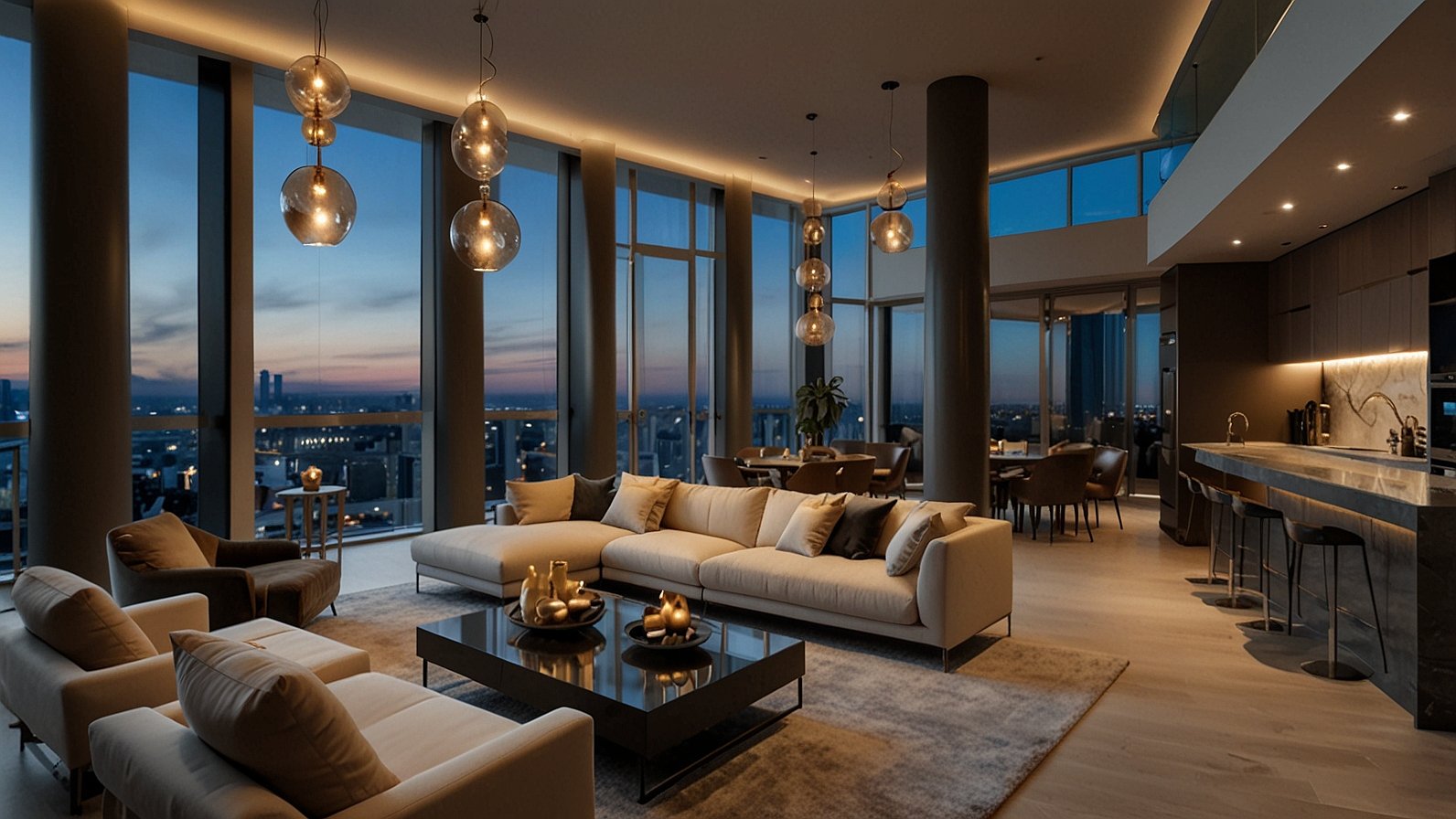Key Takeaways
- Luxury apartments present both lucrative opportunities and unique challenges for investors.
- Factors such as location, amenities, and the developer’s reputation significantly influence investment outcomes.
- Comprehensive research and guidance from experts are crucial for successful real estate investments.
- Understanding risks can help mitigate potential downsides in an ever-shifting market.
Table of Contents
- Understanding the Luxury Real Estate Market
- Key Factors to Consider Before Investing
- Benefits of Investing in Luxury Apartments
- Potential Risks and Challenges
- Tips for Successful Investment
- Conclusion
Understanding the Luxury Real Estate Market
The luxury real estate sector stands out with its promise of high-end living, world-class amenities, and prestigious locations. These properties often serve as status symbols, providing state-of-the-art facilities such as rooftop pools, wellness centers, and concierge services. The demand for properties such as a luxury Mission Valley apartment reflects the desire for comfort, convenience, and exclusivity among affluent renters and buyers.
However, the luxury market is not immune to volatility. Upscale apartments are particularly sensitive to shifts in the economy and real estate cycles. Additionally, they command higher entry and maintenance costs than standard properties, necessitating a strategic approach for prospective investors. It’s essential to assess not only the potential for high returns but also the market risks associated with such investments.
Investors should also understand broader market trends, such as urban migration patterns, the impact of remote work, or fluctuations in global wealth. Thorough knowledge of these dynamics provides the foundation for making sound investment decisions.
Sustainable features, wellness amenities, and smart home integrations are increasingly sought-after. Discerning renters and buyers are often willing to pay a premium for properties that offer energy efficiency, advanced security, and personalized technology solutions. These evolving preferences continually shape market demand and influence investment strategies.
Key Factors to Consider Before Investing
- Location: The investment potential of a luxury apartment is primarily tied to its surroundings, with properties in vibrant neighborhoods, according to Investopedia, typically near cultural, business, or entertainment hubs, often commanding the strongest demand and enduring the highest value appreciation.
- Amenities and Features: Features that support a luxury lifestyle—such as dedicated spas, co-working spaces, private lounges, and 24-hour services—can position a property well above market averages and heighten both sales and rental prospects.
- Developer Reputation: Examining the track record of the developer is vital. Established developers with a history of delivering superior quality, timely projects can inspire buyer confidence and contribute to higher resale values.
- Market Demand: Scrutinize local trends: Is there a growing segment of high-income renters? Are competing properties being built nearby? Understanding supply and demand will help gauge occupancy rates and rental prices.
- Target Audience: Consider whether the property’s features and location best serve long-term residents, transient professionals, or vacationers. This decision impacts marketing strategies and expected returns.
Benefits of Investing in Luxury Apartments
- High Returns: Over time, luxury apartments often offer significant capital gains, outpacing traditional real estate investments when located in growth-oriented or high-demand markets.
- Stable Rental Income: High-end units attract tenants prepared to pay premium prices for quality and prestige, reducing vacancy rates and driving consistent monthly income.
- Increased Property Value: The combination of superior amenities and prestigious locations generally leads to long-term appreciation.
- Prestige: Ownership of luxury properties also offers intrinsic benefits, such as exclusive access to social circles, and enhances overall investment portfolio diversification.
Potential Risks and Challenges
- High Upfront Costs: Luxury apartments require significant initial investment, as well as higher property taxes, association fees, and maintenance expenses.
- Market Volatility: Upscale real estate may be the first to experience price corrections during broader economic downturns, posing amplified financial risks.
- Tenant Acquisition: Catering to an elite clientele can mean longer vacancy periods if property standards aren’t consistently maintained or upgraded to meet evolving preferences.
- Market Saturation: Excessive new development in an area can weaken demand and put downward pressure on both sales prices and rental rates.
Tips for Successful Investment
- Conduct Thorough Research: Dive deep into market reports, property conditions, and neighborhood trends before committing capital.
- Work with Reputable Professionals: Qualified real estate agents, attorneys, and property managers with experience in luxury markets are invaluable allies in navigating the process.
- Choose Desirable Locations: Prioritize properties in established or up-and-coming neighborhoods with robust infrastructure, social amenities, and consistent demand.
- Stay Informed: Keep pace with economic indicators, zoning changes, and shifts in buyer behavior to anticipate risks and seize timely opportunities.
Conclusion
Investing in luxury apartments can offer substantial rewards when approached with diligence, strategic vision, and a thorough understanding of market nuances. By considering key factors, conducting comprehensive research, and mitigating risks, investors can unlock the full potential of high-end real estate and achieve lasting gains while enjoying the prestige and financial security that these assets typically confer.
You May Also Read: The Benefits of Using Dowsil Silicone Sealant for Construction Projects










